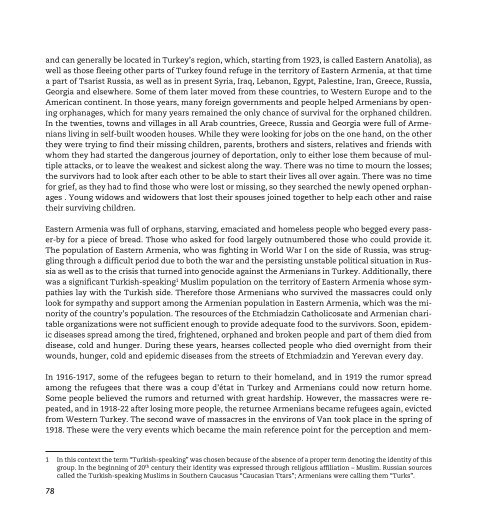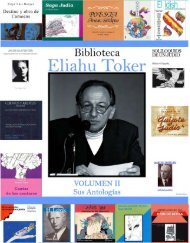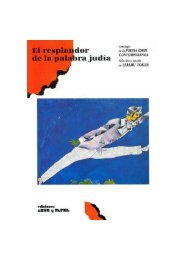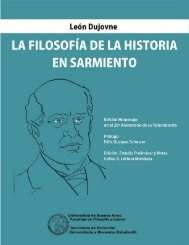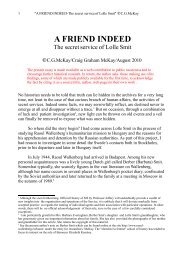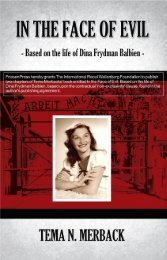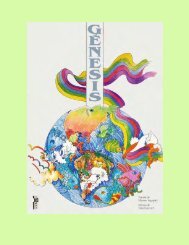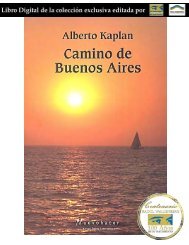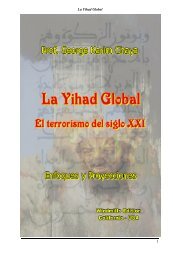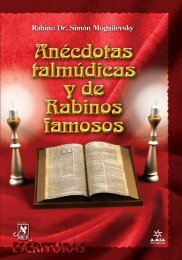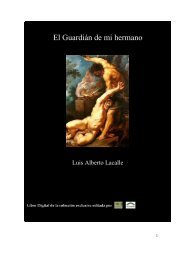Speaking to One Another - The International Raoul Wallenberg ...
Speaking to One Another - The International Raoul Wallenberg ...
Speaking to One Another - The International Raoul Wallenberg ...
- No tags were found...
You also want an ePaper? Increase the reach of your titles
YUMPU automatically turns print PDFs into web optimized ePapers that Google loves.
and can generally be located in Turkey’s region, which, starting from 1923, is called Eastern Ana<strong>to</strong>lia), aswell as those fleeing other parts of Turkey found refuge in the terri<strong>to</strong>ry of Eastern Armenia, at that timea part of Tsarist Russia, as well as in present Syria, Iraq, Lebanon, Egypt, Palestine, Iran, Greece, Russia,Georgia and elsewhere. Some of them later moved from these countries, <strong>to</strong> Western Europe and <strong>to</strong> theAmerican continent. In those years, many foreign governments and people helped Armenians by openingorphanages, which for many years remained the only chance of survival for the orphaned children.In the twenties, <strong>to</strong>wns and villages in all Arab countries, Greece, Russia and Georgia were full of Armeniansliving in self-built wooden houses. While they were looking for jobs on the one hand, on the otherthey were trying <strong>to</strong> find their missing children, parents, brothers and sisters, relatives and friends withwhom they had started the dangerous journey of deportation, only <strong>to</strong> either lose them because of multipleattacks, or <strong>to</strong> leave the weakest and sickest along the way. <strong>The</strong>re was no time <strong>to</strong> mourn the losses;the survivors had <strong>to</strong> look after each other <strong>to</strong> be able <strong>to</strong> start their lives all over again. <strong>The</strong>re was no timefor grief, as they had <strong>to</strong> find those who were lost or missing, so they searched the newly opened orphanages. Young widows and widowers that lost their spouses joined <strong>to</strong>gether <strong>to</strong> help each other and raisetheir surviving children.Eastern Armenia was full of orphans, starving, emaciated and homeless people who begged every passer-byfor a piece of bread. Those who asked for food largely outnumbered those who could provide it.<strong>The</strong> population of Eastern Armenia, who was fighting in World War I on the side of Russia, was strugglingthrough a difficult period due <strong>to</strong> both the war and the persisting unstable political situation in Russiaas well as <strong>to</strong> the crisis that turned in<strong>to</strong> genocide against the Armenians in Turkey. Additionally, therewas a significant Turkish-speaking 1 Muslim population on the terri<strong>to</strong>ry of Eastern Armenia whose sympathieslay with the Turkish side. <strong>The</strong>refore those Armenians who survived the massacres could onlylook for sympathy and support among the Armenian population in Eastern Armenia, which was the minorityof the country’s population. <strong>The</strong> resources of the Etchmiadzin Catholicosate and Armenian charitableorganizations were not sufficient enough <strong>to</strong> provide adequate food <strong>to</strong> the survivors. Soon, epidemicdiseases spread among the tired, frightened, orphaned and broken people and part of them died fromdisease, cold and hunger. During these years, hearses collected people who died overnight from theirwounds, hunger, cold and epidemic diseases from the streets of Etchmiadzin and Yerevan every day.In 1916-1917, some of the refugees began <strong>to</strong> return <strong>to</strong> their homeland, and in 1919 the rumor spreadamong the refugees that there was a coup d’état in Turkey and Armenians could now return home.Some people believed the rumors and returned with great hardship. However, the massacres were repeated,and in 1918-22 after losing more people, the returnee Armenians became refugees again, evictedfrom Western Turkey. <strong>The</strong> second wave of massacres in the environs of Van <strong>to</strong>ok place in the spring of1918. <strong>The</strong>se were the very events which became the main reference point for the perception and mem-1 In this context the term “Turkish-speaking” was chosen because of the absence of a proper term denoting the identity of thisgroup. In the beginning of 20 th century their identity was expressed through religious affiliation – Muslim. Russian sourcescalled the Turkish-speaking Muslims in Southern Caucasus “Caucasian Ttars”; Armenians were calling them “Turks”.78


